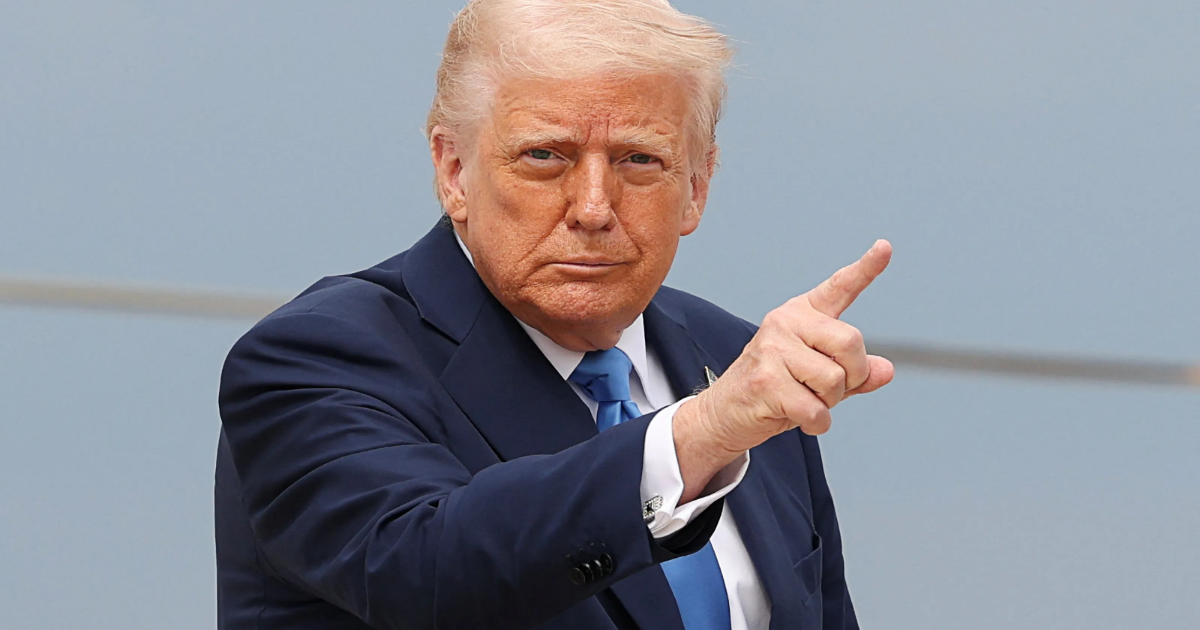- Trump told NBC News Sunday that he’s “not joking” about seeking a third term.
- The 22nd Amentment established a two-term limit for U.S. Presidents
President Donald Trump told reporters Sunday, March 30, that he’s “not joking” about running for a third term in the oval office.
Trump commented on a third term during a telephone interview with NBC news, saying “there are methods” for how he could stay in power. However, a run for a third presidential term is unconstitutional. The 22nd Amendment, ratified in 1951, puts a term limit on presidential power in the U.S.
But that doesn’t seem to be stopping Trump. He has made several comments about a third term during his first few months back at the white house.
In February, the official White House social media platforms portrayed Trump as a monarch. “Long live the king,” the post declared. Just one day after the post, Trump asked supporters at a White House reception, “Should I run again?”
“A lot of people want me to do it,” Trump said in a phone interview. “But, I mean, I basically tell them we have a long way to go, you know, it’s very early in the administration.”
Can Donald Trump run for a third term?
The simple answer: No. Under the current constitutional safeguards, Trump cannot seek a third presidential term.
Trump could try to pass a new constitutional amendment. This would require a two-thirds majority vote in both the House and Senate, or two-thirds of state legislatures can call a constitutional convention. Then, three-fourths of the state legislatures would have to ratify the amendment.
It’s an intentionally difficult process that was last done in 1992 when the 27th Amendment was enacted.
Asked by NBC whether he has been shown plans that would allow him to seek a third term, Trump said: “There are methods which you could do it,” including Vice President JD Vance running for president and then giving the role to Trump, according to USA TODAY reporting.
Is there anything in the Constitution about presidential term limits?
Yes, it is clearly outlined in the 22nd Amendment that a person serving as president can only hold the office twice. Here’s what it says:
“No person shall be elected to the office of the President more than twice, and no person who has held the office of President, or acted as President, for more than two years of a term to which some other person was elected President shall be elected to the office of the President more than once.”
When did presidential term limits become part of the Constitution?
The 22nd Amendment was ratified in 1951, according to the National Constitution Center. The idea of term limits came about from Republicans after President Franklin D. Roosevelt won four consecutive elections. His presidency started in 1933 during the Great Depression and spanned over 12 years until his death on April 12, 1945, during his fourth term.
It took nearly four years for the amendment to be ratified though.
Have there always been presidential term limits?
Not in writing.
America’s first president, George Washington, set an unofficial precedent when the first elections in the United States were happening. Washington only served as president twice, declining multiple times to serve a third term.
In later years, Washington’s decision to not seek a third term was seen as a safeguard against the type of tyrannical power wielded by the British monarchy during the Colonial era. According to the National Constitution Center, the concept of term limits was discussed at the Constitutional Convention when America was first founded but not added to the Constitution at that time.
Has anyone sought more than two terms as president?
Only a handful of people have sought a third term as president before the 22nd Amendment was ratified.
- Ulysses S. Grant tried for a third term in 1880, but he lost the Republican Party nomination to James Garfield
- Grover Cleveland lacked party support for a third term
- Woodrow Wilson hoped a deadlocked 1920 convention would turn to him for a third term
- Theodore Roosevelt originally passed on running for a third term in 1908, but would later run as third-party candidate in 1912 after a fallout with then-President William Howard Taft. Roosevelt beat Taft, but both lost to Woodrow Wilson.
Former President Franklin D. Roosevelt famously won not three, but four presidential elections, breaking the long-held tradition of two terms. While several predecessors had sought a third term, FRD was the only person to win four consecutive elections.
FDR served as president from March 4, 1933, until his death on April 12, 1945. He led the country through the Great Depression and World War II.
As a result of FDR’s unprecedented four terms, the 22nd Amendment was ratified, which limited all future presidents to two elected terms, according to the National Archives.
USA TODAY reporter Riley Beggin contributed to this report.
